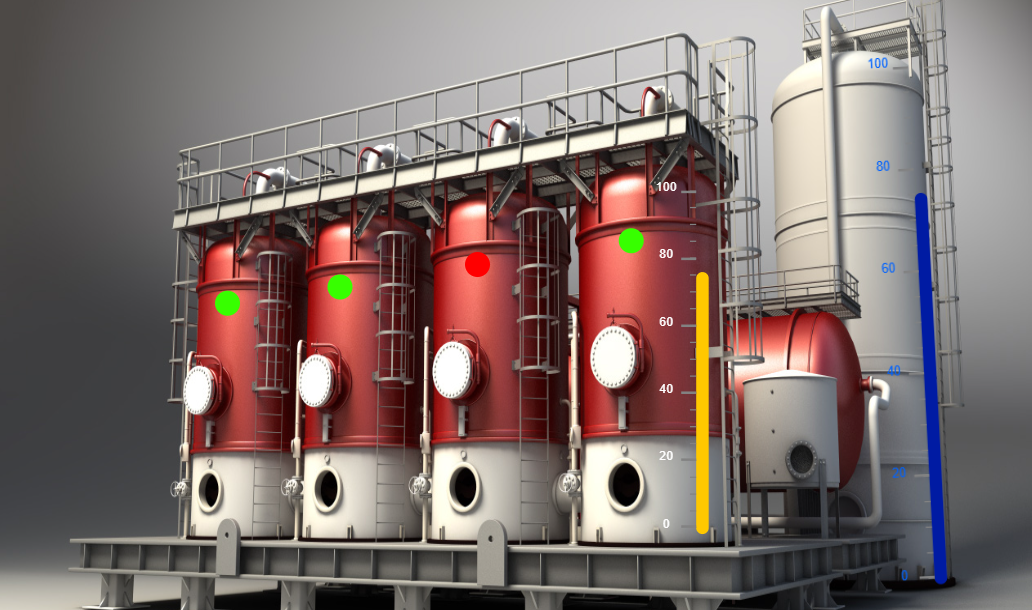What is a state of alarm?
When you hear the term "state of alarm," you might imagine a loud sound warning of an emergency, or perhaps an urgent message signaling a need for immediate attention. But in certain fields, particularly in the realm of control systems like SCADA (Supervisory Control and Data Acquisition), What are alarms used for? a state of alarm holds a much more specific meaning. This condition is crucial in alarm management and safety systems. A state of alarm typically refers to a scenario where an anomaly or abnormal condition has been detected in a system that requires immediate corrective action.
The concept of alarm management plays a pivotal role in maintaining operational safety and efficiency. In this context, understanding the different aspects of a state of alarm can help to optimize response times and mitigate risks. Let's dive deeper into the specifics of this state and its role in industrial control systems.

What is a State of Alarm?
A state of alarm in a SCADA system occurs when a monitored parameter exceeds or falls below a predefined threshold, signaling the need for attention. In simpler terms, it’s a notification that something in the system isn’t quite right, and intervention is necessary. This could be anything from a temperature exceeding safe limits in a power plant to a malfunction in an industrial production line.
The importance of managing alarms effectively cannot be overstated. Poor alarm management can lead to missed signals, delayed responses, and potentially catastrophic consequences. Alarm management aims to reduce unnecessary alarms and make sure the important ones are addressed promptly, ensuring safety, reliability, and compliance.
What Are the SCADA Alarm States?
In the world of SCADA systems, alarms are usually categorized into specific states. These states define how the system reacts to different conditions:
- Normal: The system is functioning as expected.
- Active: An anomaly has been detected, and immediate attention is required.
- Acknowledged: A response has been made, but the issue is still being investigated or addressed.
- Clear: The issue has been resolved, and the alarm is no longer active.
Alarm management principles, such as those outlined in the EEMUA Alarm Management guidelines, aim to minimize alarm fatigue and optimize the response process. By classifying alarms into these states, operators can quickly prioritize their responses and make informed decisions.
What is the Difference Between Alarm and Event in SCADA?
In SCADA systems, alarms and events are often confused, but they have distinct functions. An alarm is typically a signal that requires an immediate response to prevent a potential issue or danger. An event, on the other hand, is a broader term that refers to any significant change in the system, whether it's a simple fluctuation or a major system failure.
Alarm management for process control often involves setting clear parameters for both alarms and events, ensuring that alarms are prioritized appropriately while events are logged for future analysis.

What is an Alarm in SCADA?
In SCADA systems, an alarm serves as a critical tool for monitoring and maintaining system integrity. It can indicate anything from a sensor malfunction to an impending failure of a system component. Alarms are designed to inform operators of potential hazards so they can take corrective actions.
Standard alarm management procedures in SCADA systems ensure that alarms are clearly defined, consistently triggered, and properly categorized. By following alarm management standards, organizations can improve both safety and efficiency, reducing downtime and minimizing risks.
What Are the Different Types of SCADA Alarms?
SCADA alarms come in different forms, each designed to handle specific scenarios. Here are the seven types of alarm systems commonly used:
- High Limit Alarms: Triggered when a variable exceeds an upper limit.
- Low Limit Alarms: Activated when a variable drops below a lower limit.
- Rate of Change Alarms: Triggered by rapid changes in system variables.
- Analog Alarms: Used for continuous variables like temperature or pressure.
- Digital Alarms: Concerned with binary conditions like on/off or open/closed.
- Time-Delay Alarms: Triggered after a specified delay.
- Custom Alarms: Tailored to the unique needs of the system being monitored.
Each alarm type has its own role in the overall system, ensuring that various aspects of a process are monitored and any deviations are immediately flagged.

What Are Alarms Used For?
Alarms in SCADA systems are primarily used to alert operators about abnormal conditions that need to be addressed immediately. Their role is vital in preventing accidents, equipment damage, and other safety hazards. These alarms serve as an early warning system, giving operators a chance to intervene before the issue escalates.
SCADA alarm notification software plays an integral part in ensuring that alarms reach the right person at the right time. Whether it's through an audio signal, a visual cue, or a text message, these systems ensure that critical information is communicated efficiently.
Conclusion
A state of alarm is a crucial component of modern alarm management systems, particularly in industries reliant on SCADA systems for monitoring and control. By understanding how alarms function and the importance of effective alarm management, organizations can safeguard operations, improve safety, and enhance overall system reliability.
If you're looking to implement or improve alarm management within your own organization, consider integrating specialized alarm management software to streamline the process.
Interested in learning more about alarm management strategies? Reach out to us for expert advice and tailored solutions to enhance your system’s safety and efficiency, contact us today!
You might also like



